Aena Begins Modernization of São Paulo’s Congonhas Airport with $2.4 Billion Investment
The airport concessionaire Aena held the groundbreaking ceremony on December 11 to formalize the start of construction at Congonhas Airport in São Paulo.
With an investment of R$ 2.4 billion, the aerodrome in the capital of São Paulo will gain a passenger terminal more than twice its current size, new boarding bridges, and several improvements in operational efficiency. The airport will also feature 20,000 m² dedicated to commercial areas.
According to reports from our associated outlet Aeroin, after the works, São Paulo will have a more comfortable, safer, greener, and more spacious airport for boarding and deplaning, according to the concessionaire.
In addition to the incorporation of operational areas, new equipment, technologies, and modern systems will be acquired, promoting greater operational efficiency. Another new feature is the positions for aircraft adapted to receive higher-capacity models such as the Airbus A321neo and Boeing 737 MAX-10.
“The expansion and modernization of Congonhas reflect Aena’s global mission to offer excellent airport infrastructure, connect people, and promote sustainable development. This project reaffirms our confidence in Brazil and our commitment to delivering innovative solutions for air transportation,” said Aena’s president, Maurici Lucena, who attended the event.
“This milestone symbolizes Aena’s commitment to transforming Congonhas into a benchmark of modernity, sustainability, and efficiency. With significant investments, we are creating a more comfortable and safer environment for our passengers while respecting the rich history of this iconic airport in the city of São Paulo,” stated Santiago Yus, general director of Aena Brasil.
In addition to Aena executives from Spain and Brazil, the event on Wednesday was attended by the Minister of Ports and Airports, Silvio Costa Filho, the National Secretary of Civil Aviation, Tomé Franca, and the Vice Governor of São Paulo, Felicio Ramuth, as well as the Secretary of Urban Planning and Licensing of São Paulo, Elisabete França, federal deputy Celso Russomano, members of the Ports and Airports Committee of the Federal Chamber, and other authorities, representatives of airlines, and stakeholders in the air transport sector.
Aena announced that HTB would be the construction company responsible for the project. Delivery is expected by June 2028, when passenger boarding will begin in the new terminal.
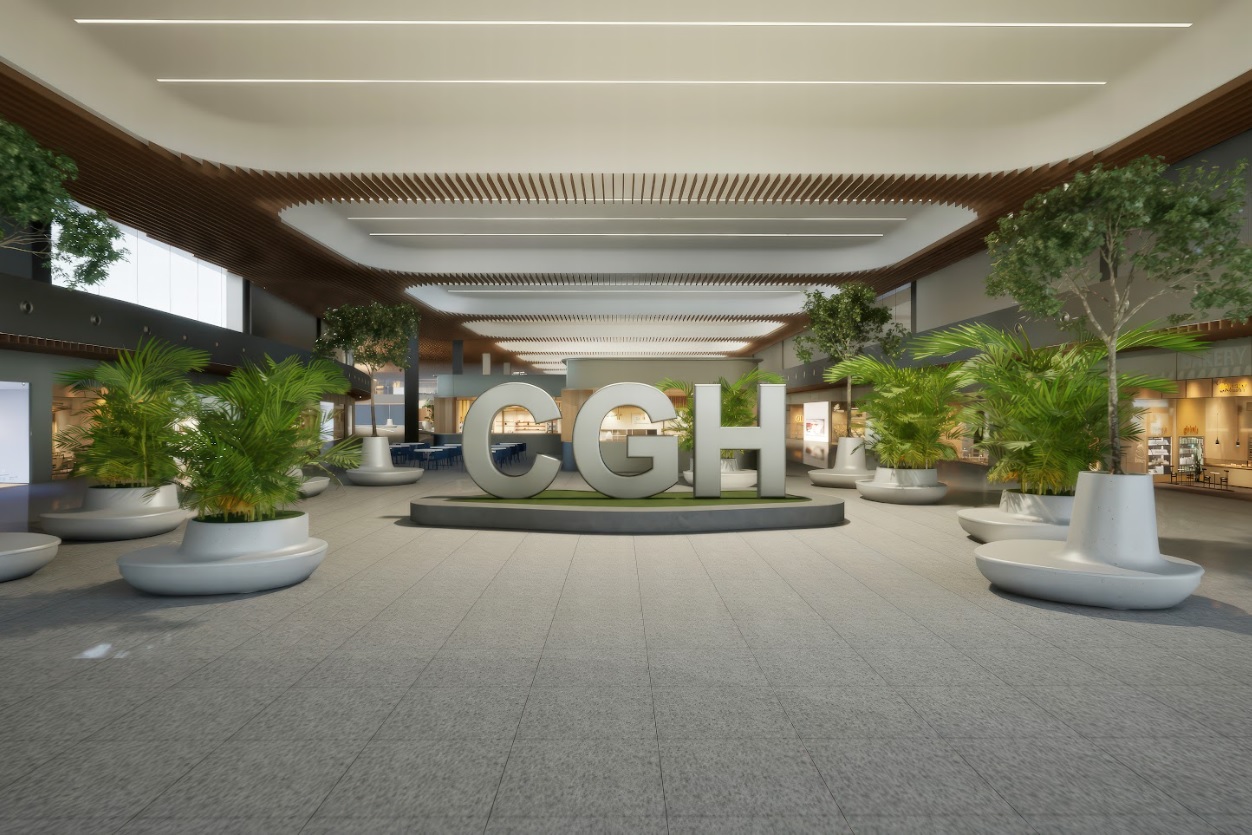
To minimize operational impacts, the works will be carried out in stages. The first phase will include demolishing structures, installing construction works, interventions in the aircraft apron, and improvements in taxiways. In the second phase, airlines will move to the new hangars, starting the construction of the pier for the new terminal and the works in the cataloged hangar.
In the third phase, boarding bridges will be installed at the new pier, and a baggage control and processing system will be implemented. The final stages will include the completion of the passenger terminal with the delivery of new bridges, baggage systems, and modernization of the current terminal.
“We had the honor of being chosen by Aena to carry out this great project. With solid experience in the airport sector, we have performed interventions at over 20 airports across the country in recent years. This new contract is the culmination of our successful strategy, and we will apply all our experience and knowledge to deliver another project of excellence, thereby contributing to its success,” said Detlef Dralle, general director of the construction company.
The terminal will be double its current size
Once the works are completed, the boarding and deplaning area will double, reaching over 100,000 m². The project includes the preservation and revitalization of spaces listed as Historical Heritage, which will be integrated into the new terminal. The new buildings will be used for boarding, while the current terminal will handle arrivals.
A new commercial concept will also be implemented, featuring a renewed mix of shops, more comfortable VIP lounges, and corporate spaces such as offices and business rooms.
The departures terminal will feature a new check-in hall with 72 wide and accessible counters, expandable to 108, and a new pier, 33 meters wide and 330 meters long. There will be 19 new boarding bridges replacing the current 12, ensuring 70% or more direct boardings to aircraft.
The cataloged hangar will be repurposed, with 10 remote boarding gates. There will also be 13 automated boarding pass readers, and inspection channels will increase to 17.
Upon arrival, passengers will also enjoy greater comfort. A new, faster, and smarter baggage processing system with 10 carousels (currently three) will be installed, and the number of baggage claim belts will increase from five to seven, totaling 228 meters in length.
The works will also enhance operational efficiency. A new 215,000 m² apron for commercial aviation will increase aircraft positions from 30 to 37, of which 19 are on bridges and 18 are remote, meeting international standards and capable of accommodating Airbus A321neo and Boeing 737 MAX-10 aircraft at all positions.
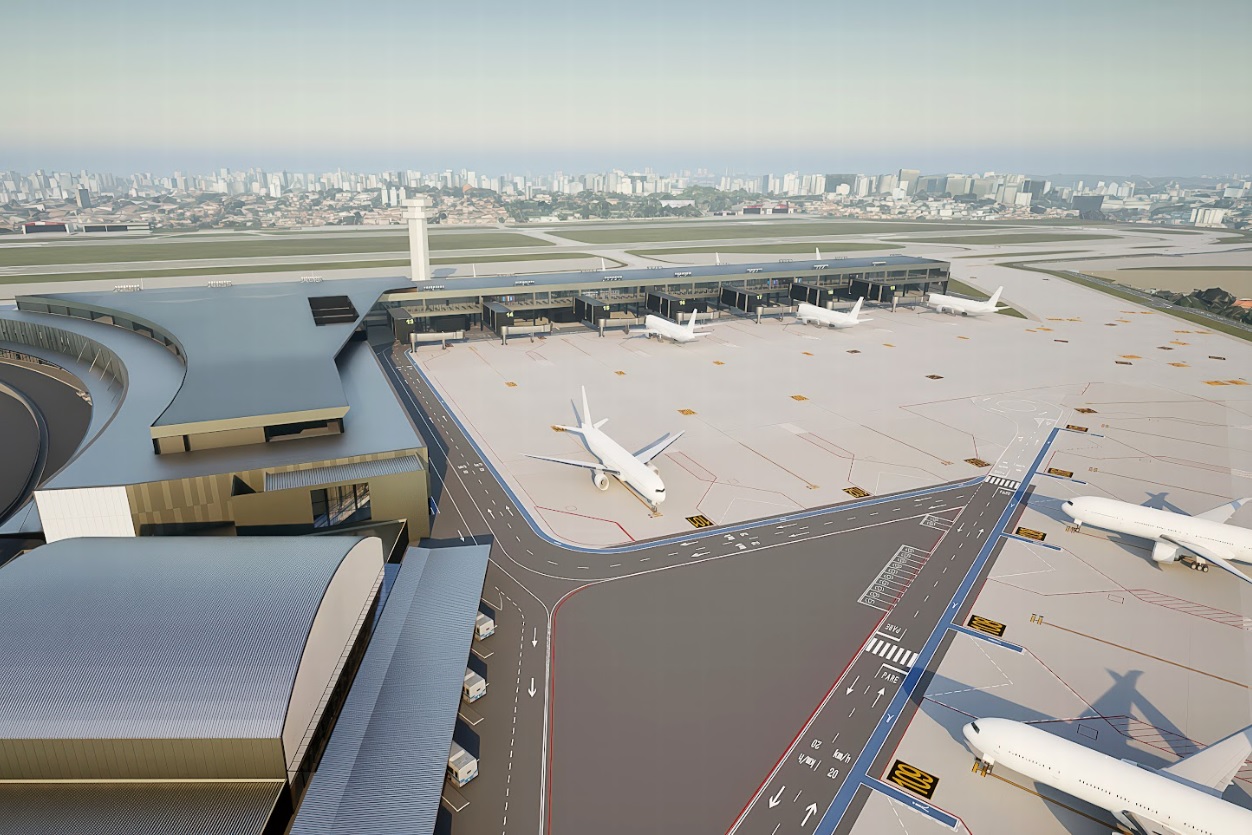
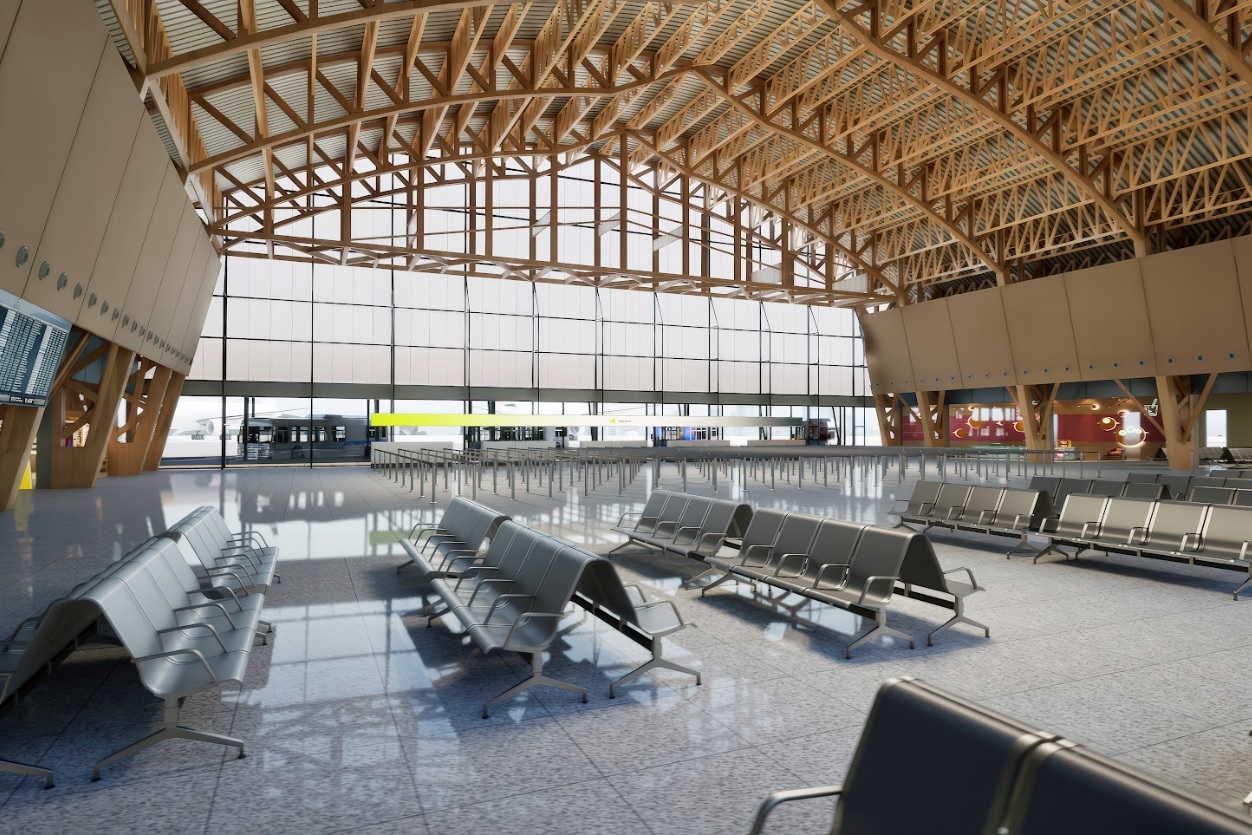
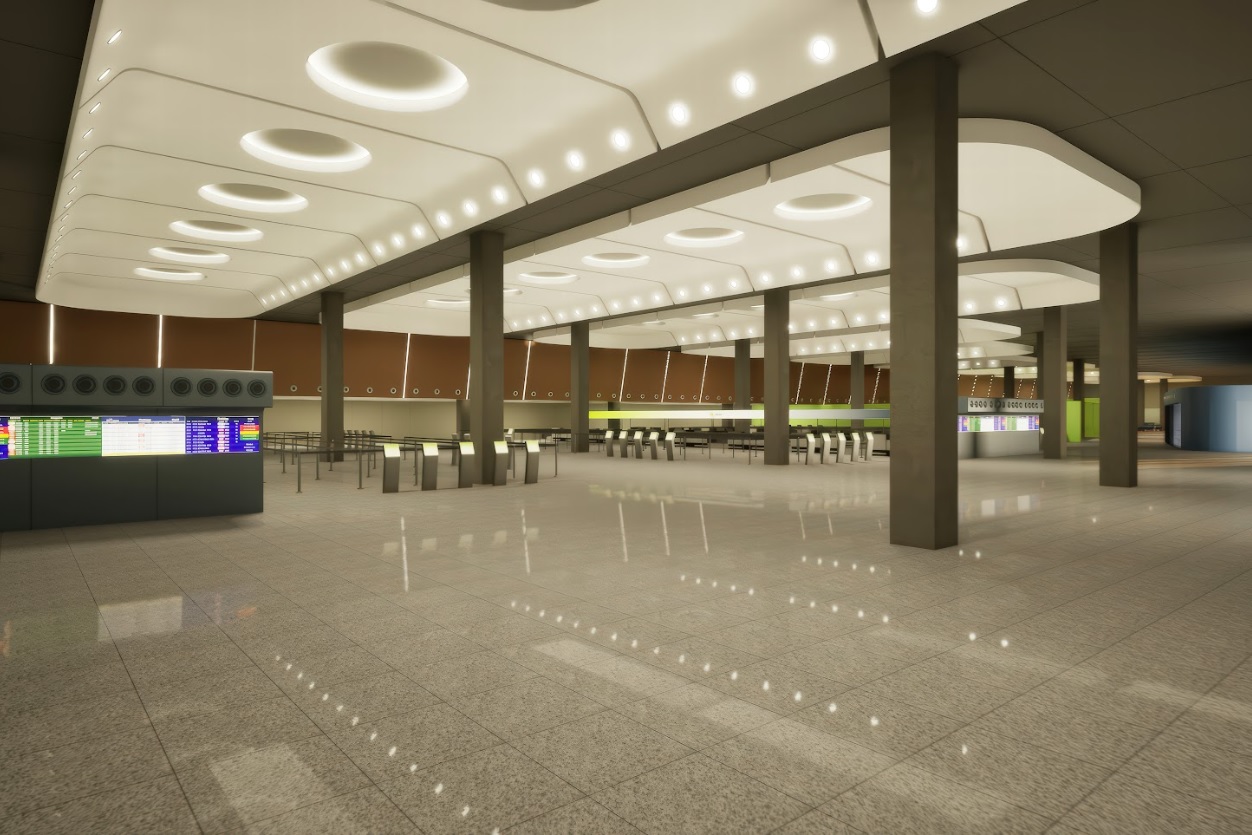
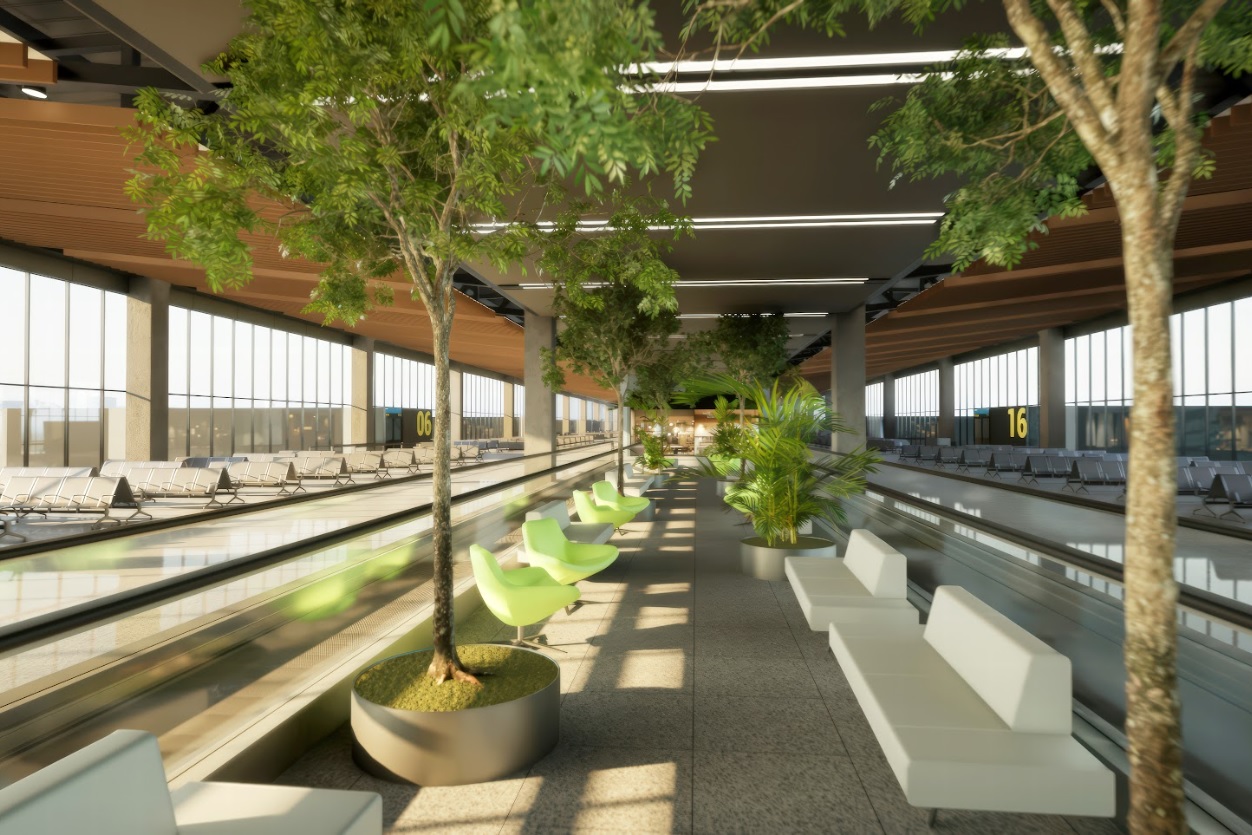
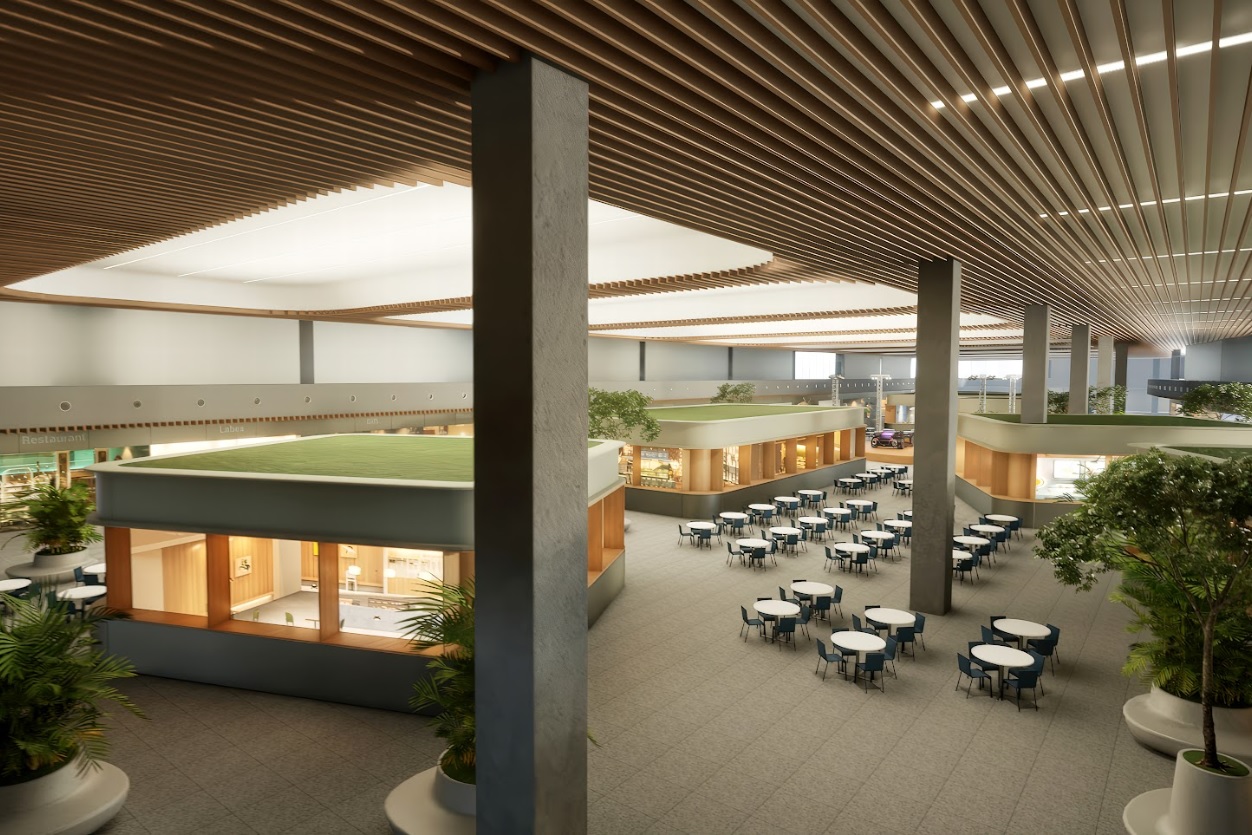
Additionally, the runways and aprons will receive structural reinforcement, new taxiways, a new service road for general aviation, and a rapid exit when operating on threshold 35L.
To improve road traffic and reduce congestion at the terminal entrance, Aena will create a new pick-up plaza with 72 spaces for app-based cars. The curb area will increase by 250 meters for passenger boarding and deplaning, and there will be direct access to the future Golden Line metro station.
In terms of sustainability, Congonhas Airport will have a new electrical substation with better equipment and the use of clean energy, reducing fossil fuel consumption. There will also be electrical power and air conditioning for aircraft at boarding bridges, reducing CO2 emissions.
Other improvements include a new solid waste plant, efficient air conditioning in the terminal, and increased natural lighting.
Actions already taken
In its first year managing Congonhas Airport, Aena has already implemented several improvements. A pocket for app-based car drivers and a new passenger boarding area were opened during the year, reducing user waiting times. Aena has already started expanding the remote departure lounge and renovating the bathrooms, expected to be completed by the first quarter of 2025.
Combining sustainability and comfort, Aena acquired ten 100% electric buses for remote passenger boarding. These models produce zero gas and noise emissions, with a range of 270 kilometers per battery recharge. These sustainable vehicles will reduce CO2 emissions by 510 tons per year.
Other completed actions include reorganizing and expanding taxiway repaving and opening new stores and restaurants.

/https://aviacionlinecdn.eleco.com.ar/media/2024/12/Congonhas-projecao-24121108.jpg)
Para comentar, debés estar registradoPor favor, iniciá sesión